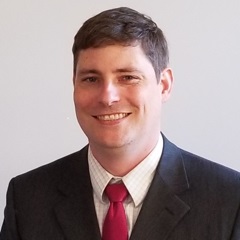 Speaker: Eric Lass, Materials Research Engineer at the National Institute of Standards and Technology
Speaker: Eric Lass, Materials Research Engineer at the National Institute of Standards and Technology
Title: Reproducible Microstructures and Reliable Properties in Additively Manufactured Metals Through Post-build Thermal Processing
Abstract: Additive manufacturing (AM) has received significant attention in recent years because of its potential to transform the commercial production of components, particularly for high-value, low-volume applications, where part geometries and other requirements make them difficult or impossible to produce via conventional processing methods. One inherent drawback to current AM technology is the reproducibility of microstructures and properties of materials created via the additive process. This is because most of the alloys currently in use for AM applications were originally developed for dramatically different processing routes, namely conventional cast and/or wrought processes. Thus, the microstructures and properties of alloys built using AM processes can be dramatically different than nominally identical wrought counterparts. In many cases, properties also show significant variation from build to build using the same AM process, making component design using such materials impossible. In the present work, we investigate the processing-structure-relationships in additively manufactured materials, focusing on thermal processing in the solid state, i.e. post-built material. Specifically, Inconel 625 and 17-4 PH stainless steel are investigated. As expected, as-built microstructures are comparable to welded materials, and they respond in a similar manner to thermal processing as welded alloys. However, differences are also observed, resulting from the unique processing history of AM alloys compared to conventional materials. For example, composition differences arising from the gas atomization of powder feedstock. Using both computational modeling and experimental investigation the differences in microstructural evolution behavior of conventional and AM materials are highlighted; and post-build thermal processing regimens are identified to develop more uniform predictable AM-produced microstructures. The successful identification of these new heat treatment protocols is demonstrated by comparing the mechanical properties of the AM material with the wrought. In 17-4 PH stainless steel, the post-processed AM product regains >90 % of the yield strength of its wrought counterpart, compared to <60 % for the as-built material. Finally, the future of AM will also be discussed, where the dream is to employ alloys specifically designed to take advantage of AM processing instead of repurposing alloys designed for other applications. Some possible considerations for AM alloy design will be discussed.
Bio: Dr. Eric A. Lass is a Materials Research Engineer at the National Institute of Standards and Technology (NIST) in Gaithersburg, MD, where he has been since 2009 when he was awarded a National Research Council postdoctoral fellowship. Prior to his arrival at NIST, he received a B.S. in Materials Science & Engineering from Michigan Technological University in 2001, an M.S. in Materials Engineering from Rensselaer Polytechnic Institute in 2003, and finally a Ph.D. in Materials Science and Engineering in 2008 from the University of Virginia where he was advised by Prof. Gary Shiflet. Dr. Lass leads much of the experimental efforts in the Thermodynamics and Kinetics Group (TKG) of the Materials Science and Engineering Division (MSED) at NIST. He is currently the leader of the TKG project titled “Advanced Materials Design: Structural Applications”; and is also a sub-lead on the MSED project on additive manufacturing (AM), where he coordinates most of the experimental investigation into processing-structure-property relations in AM materials. His general research interests are in PSP relationships, specifically the application of thermodynamics and kinetics to microstructural evolution and phase transformations in metals and alloys, and in understanding how microstructural evolution can be controlled to enable the design of new materials and processes. He is also active in TMS, serving in leadership positions on several technical committees and organizing multiple symposia at TMS annual meetings.
MSE Seminar Host: Katie Bratlie